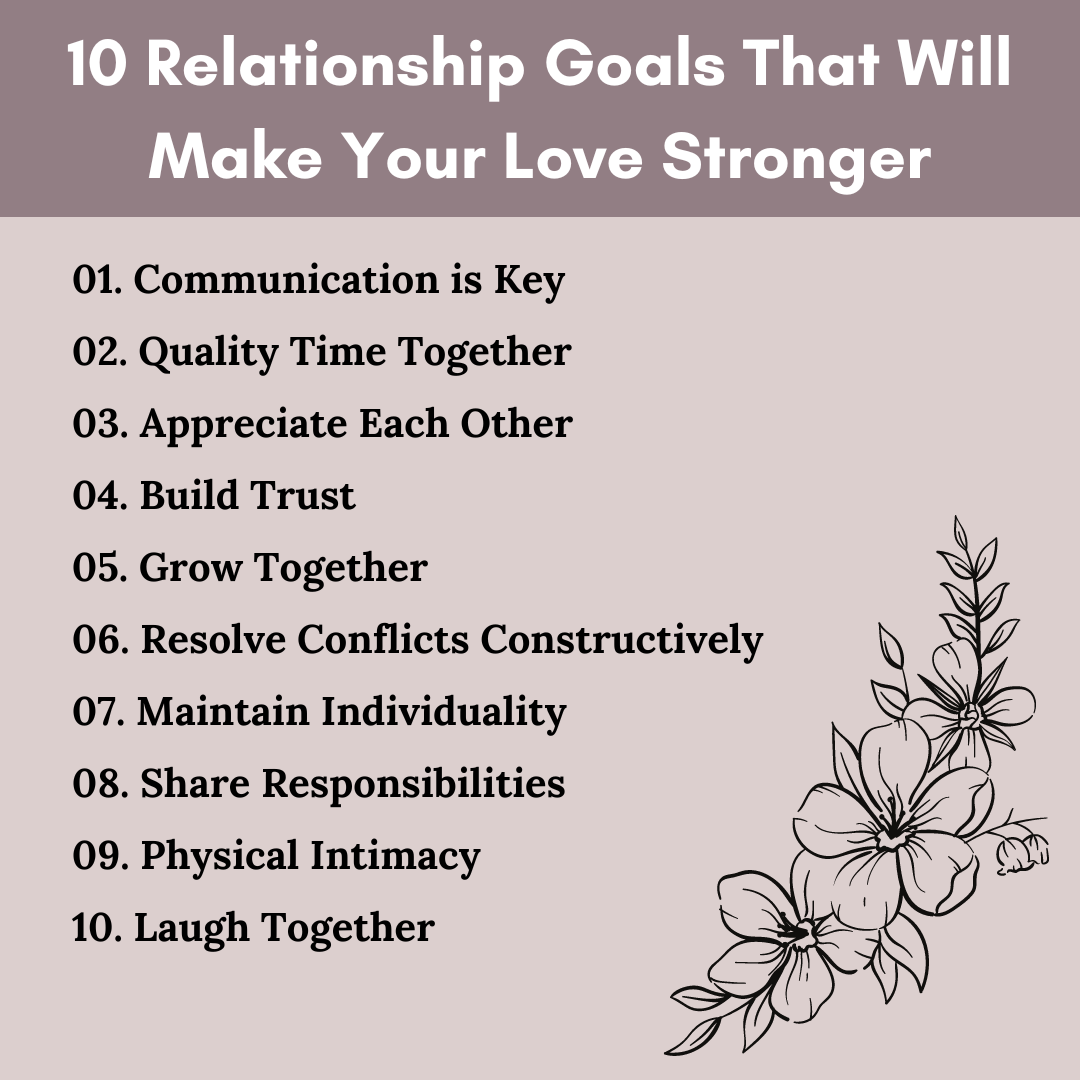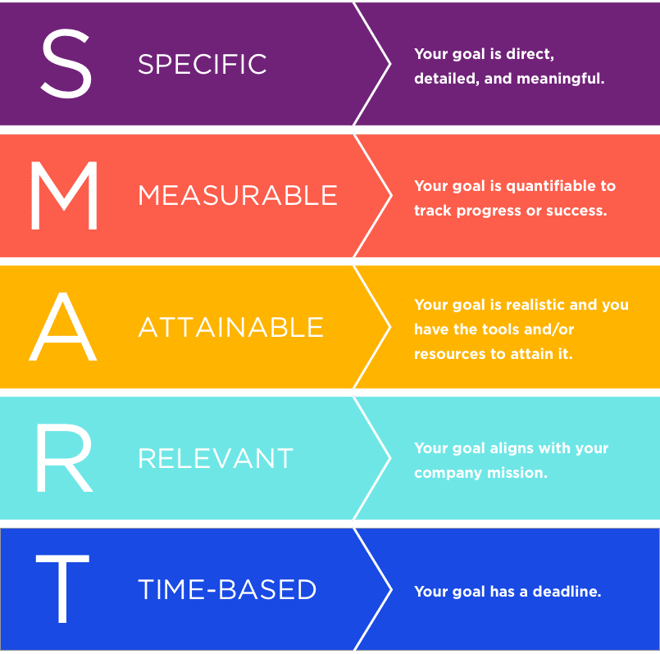Creating and maintaining healthy relationships is a skill that can be learned and honed over time. Understanding the fundamental principles that underpin successful relationships is crucial for anyone looking to nurture meaningful connections. Let’s dive into science-backed tips and effective ways to establish healthy relationship goals.

“10 Relationship Goals That Will Make …” from medium.com and used with no modifications.
Key Takeaways
- Clear communication is the cornerstone of any healthy relationship.
- Trust is built over time and requires consistent effort from both parties.
- Shared experiences can strengthen bonds and create lasting memories.
- Expressing gratitude regularly enhances relationship satisfaction.
- Setting SMART (Specific, Measurable, Achievable, Relevant, Time-bound) goals together can align expectations and foster growth.
Introduction to Healthy Relationship Goals
Relationships are an integral part of our lives, influencing our happiness, health, and well-being. Whether it’s with a partner, family member, or friend, the quality of these relationships often depends on the goals we set and how we work towards them.
Establishing clear and healthy relationship goals helps us to navigate the complexities of human connections. It provides a roadmap for building and maintaining strong, fulfilling relationships.
Understanding the Importance of Goals in Relationships
Goals in relationships act like a compass, guiding partners towards mutual understanding and shared values. They provide a sense of direction and purpose, helping individuals to align their actions with their desires. For more insights, explore these relationship red flags to watch out for.
Having well-defined goals can prevent misunderstandings and conflicts. It ensures that both parties are on the same page, working towards a common objective. Moreover, it fosters a sense of accountability, encouraging individuals to put in the necessary effort to nurture the relationship.

“Simple Goal-Setting for a Healthy New …” from wellness360magazine.com and used with no modifications.
Common Myths About Relationship Goals
There are several misconceptions about setting goals in relationships. One common myth is that having goals means the relationship is in trouble. In reality, setting goals is a proactive approach to strengthening the bond and ensuring its longevity. Additionally, understanding relationship red flags can help partners navigate challenges more effectively.
Another myth is that goals restrict spontaneity. While it’s true that some planning is involved, relationship goals are flexible and can evolve as the relationship grows. They don’t limit freedom but rather provide a framework within which spontaneity can thrive.
Science-Backed Tips for Building Stronger Relationships
Research in psychology and relationship studies has uncovered several strategies that can help individuals build stronger and more resilient relationships. By incorporating these science-backed tips, you can create a solid foundation for your relationships.
Communication: The Foundation
Effective communication is the bedrock of any successful relationship. It involves not just speaking but also listening actively and empathetically. When both parties feel heard and understood, it strengthens the emotional connection, which can be further enhanced by practicing forgiveness techniques.
To improve communication, practice active listening by giving your full attention to your partner and responding thoughtfully. Avoid interrupting and make an effort to understand their perspective. This creates a safe space for open and honest dialogue.

“Maintaining a strong relationship when …” from blog.adoptuskids.org and used with no modifications.
The Role of Trust in Relationships
Trust is a critical component of healthy relationships. It’s built over time through consistent actions and honest communication. Without trust, relationships can become strained and fragile. For more insights, consider these tips for happy, long-lasting relationships.
Building trust involves being reliable, keeping promises, and being transparent about your intentions. It’s also about being vulnerable and allowing your partner to see your true self. Trust is reciprocal; as you trust your partner, they will likely trust you in return.
The Power of Shared Experiences
Shared experiences are the glue that binds people together. Whether it’s traveling to a new place, trying a new hobby, or simply spending a day together without distractions, these moments create memories that strengthen the bond between individuals. When you engage in activities together, it fosters teamwork and collaboration, essential components of a healthy relationship.
Consider setting aside regular time for shared experiences. It doesn’t have to be extravagant or expensive. A simple picnic in the park or cooking a meal together can be just as meaningful. These activities provide opportunities to learn more about each other, discover shared interests, and build a stronger connection.
Expressing Gratitude Regularly
Gratitude is a powerful tool in maintaining and enhancing relationships. Expressing appreciation for your partner’s efforts and qualities not only makes them feel valued but also reinforces positive behaviors. It cultivates a positive atmosphere and encourages both partners to continue nurturing the relationship.
Make it a habit to express gratitude daily. It can be as simple as saying “thank you” for small acts of kindness or acknowledging your partner’s support during tough times. By focusing on the positives, you create a cycle of appreciation and goodwill that benefits both parties.
Effective Ways to Achieve Relationship Goals
Setting relationship goals is one thing, but achieving them requires deliberate effort and commitment. Here are some effective strategies to ensure you and your partner stay on track and work towards a fulfilling relationship.

“SMART Goals and Use Them at Work …” from www.worktango.com and used with no modifications.
Setting SMART Goals Together
SMART goals are Specific, Measurable, Achievable, Relevant, and Time-bound. When setting relationship goals, ensure they meet these criteria to enhance clarity and focus. For instance, instead of saying, “We want to communicate better,” you could set a goal to have a weekly 30-minute discussion about each other’s week.
This approach helps in breaking down broad objectives into manageable steps, making it easier to track progress and celebrate achievements. Regularly review and adjust these goals as needed to accommodate changes in your relationship dynamics.
Regular Relationship Check-Ins
Consistent check-ins are vital for maintaining a healthy relationship. These sessions provide a platform to discuss what’s working, what needs improvement, and how both parties feel about the relationship’s direction. It’s an opportunity to address concerns before they escalate into bigger issues.
Schedule regular check-ins, perhaps monthly, where both partners can speak openly and honestly. Use this time to reassess goals, celebrate successes, and make necessary adjustments. This proactive approach ensures that both partners remain aligned and invested in the relationship’s growth.
Prioritizing Quality Time
In today’s fast-paced world, finding quality time for each other can be challenging, yet it’s crucial for a thriving relationship. Quality time means being fully present with each other, without distractions from technology or work.
Make it a priority to schedule regular date nights or weekend getaways. These moments allow you to reconnect, relax, and enjoy each other’s company, strengthening your emotional bond and understanding of each other.
Seeking Outside Support When Needed
Sometimes, despite best efforts, relationships encounter obstacles that require external assistance. Seeking support from a therapist or counselor can provide new perspectives and tools to navigate challenges effectively. For more insights, you might want to explore relationship red flags to watch for.

“Why Quality Time With Family Matters No …” from thetituswoman.com and used with no modifications.
Don’t hesitate to reach out for help if you feel stuck or overwhelmed. Professional guidance can offer valuable insights and strategies to improve communication, resolve conflicts, and enhance relationship satisfaction.
Conclusion: Growing Together
Healthy relationships are built on a foundation of clear communication, trust, and shared experiences. By setting and working towards relationship goals, you can ensure that your connections remain strong and fulfilling. Remember, relationships require effort and commitment from both parties. By implementing the tips and strategies discussed, you can nurture your relationships and enjoy the benefits of a deeper, more meaningful connection.
As you continue on this journey, remain open to growth and change. Relationships are dynamic and evolve over time. Embrace this evolution and use it as an opportunity to strengthen your bond and achieve your relationship goals together.
Frequently Asked Questions (FAQ)
Setting goals in relationships helps align expectations and fosters growth. It’s important to revisit these goals regularly to ensure they remain relevant and achievable.
Below are some common questions about setting and achieving healthy relationship goals.
What are SMART goals in a relationship?
SMART goals in a relationship are Specific, Measurable, Achievable, Relevant, and Time-bound. These criteria help in setting clear and focused objectives. For instance, instead of a vague goal like “improve communication,” a SMART goal would be “have a weekly 30-minute discussion about our week every Sunday evening.”
This approach breaks down goals into actionable steps, making it easier to track progress and celebrate achievements together.
How often should couples have relationship check-ins?
Regular relationship check-ins are vital for maintaining a healthy connection. Ideally, couples should schedule these sessions monthly. However, the frequency can vary depending on the couple’s needs and dynamics. It’s also important to be aware of relationship red flags that might necessitate more frequent check-ins.
During these check-ins, discuss what’s working, what needs improvement, and how both partners feel about the relationship’s direction. This proactive approach ensures alignment and investment in the relationship’s growth.
Why is gratitude important in a relationship?
Gratitude plays a crucial role in enhancing relationship satisfaction. Expressing appreciation for your partner’s efforts and qualities makes them feel valued and reinforces positive behaviors.
By focusing on the positives, you create a cycle of appreciation and goodwill that benefits both parties, fostering a positive atmosphere and encouraging both partners to continue nurturing the relationship.

“A Message of Gratitude for Thanksgiving …” from uucsj.org and used with no modifications.
How can we improve communication in our relationship?
Improving communication involves practicing active listening, being empathetic, and creating a safe space for open dialogue. Give your full attention to your partner, avoid interrupting, and strive to understand their perspective. To further enhance your relationship, consider being aware of relationship red flags that may hinder effective communication.
Regularly engage in discussions about each other’s thoughts and feelings, and use “I” statements to express your needs and emotions without placing blame.
When should we seek help from a relationship counselor?
If you feel stuck or overwhelmed by recurring issues in your relationship, it may be time to seek help from a relationship counselor. Professional guidance can offer valuable insights and strategies to improve communication, resolve conflicts, and enhance relationship satisfaction. Additionally, recognizing relationship red flags early on can be crucial in maintaining a healthy partnership.
Building a positive self-image is crucial for personal development and overall well-being. It involves recognizing your strengths, accepting your flaws, and striving for improvement. For those looking to enhance their self-perception, there are numerous strategies available. One effective approach is to focus on positive self-image improvement techniques, which can provide practical tips and methods to boost confidence and self-esteem.










Leave a Reply